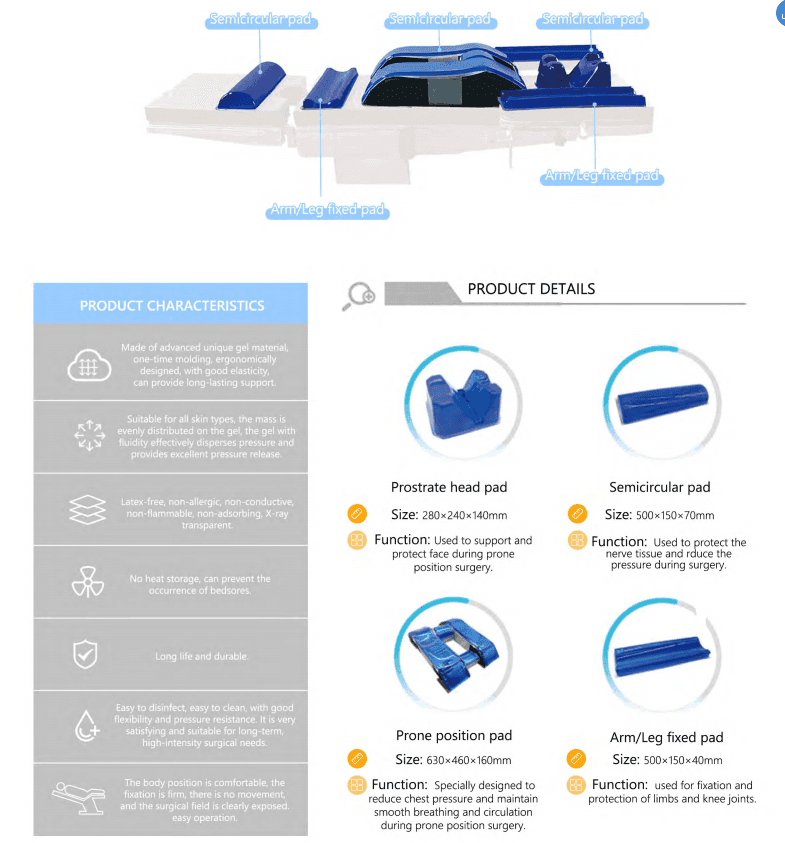Address
304 North Cardinal St.
Dorchester Center, MA 02124
Work Hours
Monday to Friday: 7AM - 7PM
Weekend: 10AM - 5PM
In the fast-paced environment of modern healthcare, the operating room (OR) is a critical space where precision and safety are paramount. Among the many tools and equipment that facilitate successful surgeries, surgical table pads play a crucial role. These pads are designed to provide patient comfort and safety while also ensuring that the surgical procedures can be carried out effectively. This blog post will explore the importance of surgical table pads, their types, features, and how they contribute to the efficiency of the OR.

Surgical table pads are specialized cushions that are placed on top of the surgical table to provide support and comfort to the patient during surgery. They are designed to:
There are several types of surgical table pads, each with specific features suited to different surgical needs:
Below is a table comparing the different types of surgical table pads based on their material and intended use:
| Type of Pad | Material | Features | Intended Use |
|---|---|---|---|
| Standard | Foam | Basic support | General surgeries |
| Memory Foam | Varies | Conforming to body shape | Prolonged surgeries requiring pressure relief |
| Gel | Gel beads | High pressure relief | Long surgeries, areas prone to pressure sores |
| Positioning | Various | Specific shapes for body parts | Specialized surgeries requiring particular patient positioning |
When selecting surgical table pads, certain features are essential for ensuring patient safety and comfort:
The use of surgical table pads in operating rooms offers numerous benefits:

While surgical table pads are beneficial, they also present certain challenges:
To address these challenges, hospitals can:
Surgical table pads are an indispensable piece of equipment in modern operating rooms. They contribute significantly to patient care by ensuring comfort, safety, and the facilitation of surgical procedures. As medical technology advances, so too will the design and functionality of surgical table pads, potentially offering even greater benefits to both patients and medical professionals.
Q: How often should surgical table pads be replaced?
A: The frequency of replacement depends on the manufacturer’s recommendations and the wear and tear experienced in regular use.
Q: Can surgical table pads be used for all types of surgeries?
A: Yes, but the type of pad used may vary based on the specific needs of the procedure.
Q: Are surgical table pads difficult to clean?
A: High-quality pads are designed to be easily cleaned and sterilized, adhering to strict infection control protocols.
Q: Do surgical table pads come in different sizes?
A: Yes, they are available in various sizes to fit different surgical tables and accommodate patients of different body sizes.
Q: What is the role of antimicrobial properties in surgical table pads?
A: Antimicrobial properties help to inhibit the growth of bacteria and other microorganisms, reducing the risk of postoperative infections.
